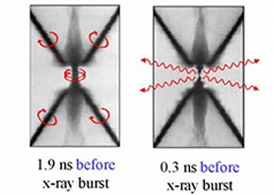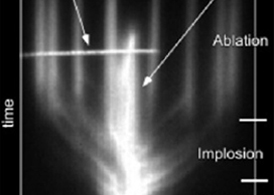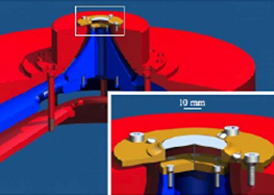
An X-pinch is formed by two or more wires that cross at a single point and is driven by a large current pulse (>80 kA) from a pulsed power device. The currents through each of the wires of an n-wire X-pinch combine at the cross-point and the magnetic pressure at that location increases as n2 relative to a single wire. The increased magnetic pressure creates a localized a pinch column (mini z-pinch) approximately 100-400 μm long. The column undergoes instabilities that cause an implosion of the plasma into small regions of high temperature and density, often referred to as micropinches. From these regions, one or more micron-scale, sub-nanosecond soft x-ray bursts (1-10 keV) are emitted.
The emission from the center of the X-pinch acts as a near instantaneous (sub-nanosecond) point source (micron-scale). Such a source can be used for point-projection imaging of objects both static (housefly) or moving (another X-pinch as seen above, or a z-pinch shown below).
In order to image a z-pinch, the X-pinch must be placed in the return path as illustrated in the diagram below.
A new area research involves placing an X-pinch below a z-pinch in order to image the axis of an array as illustrated below.













